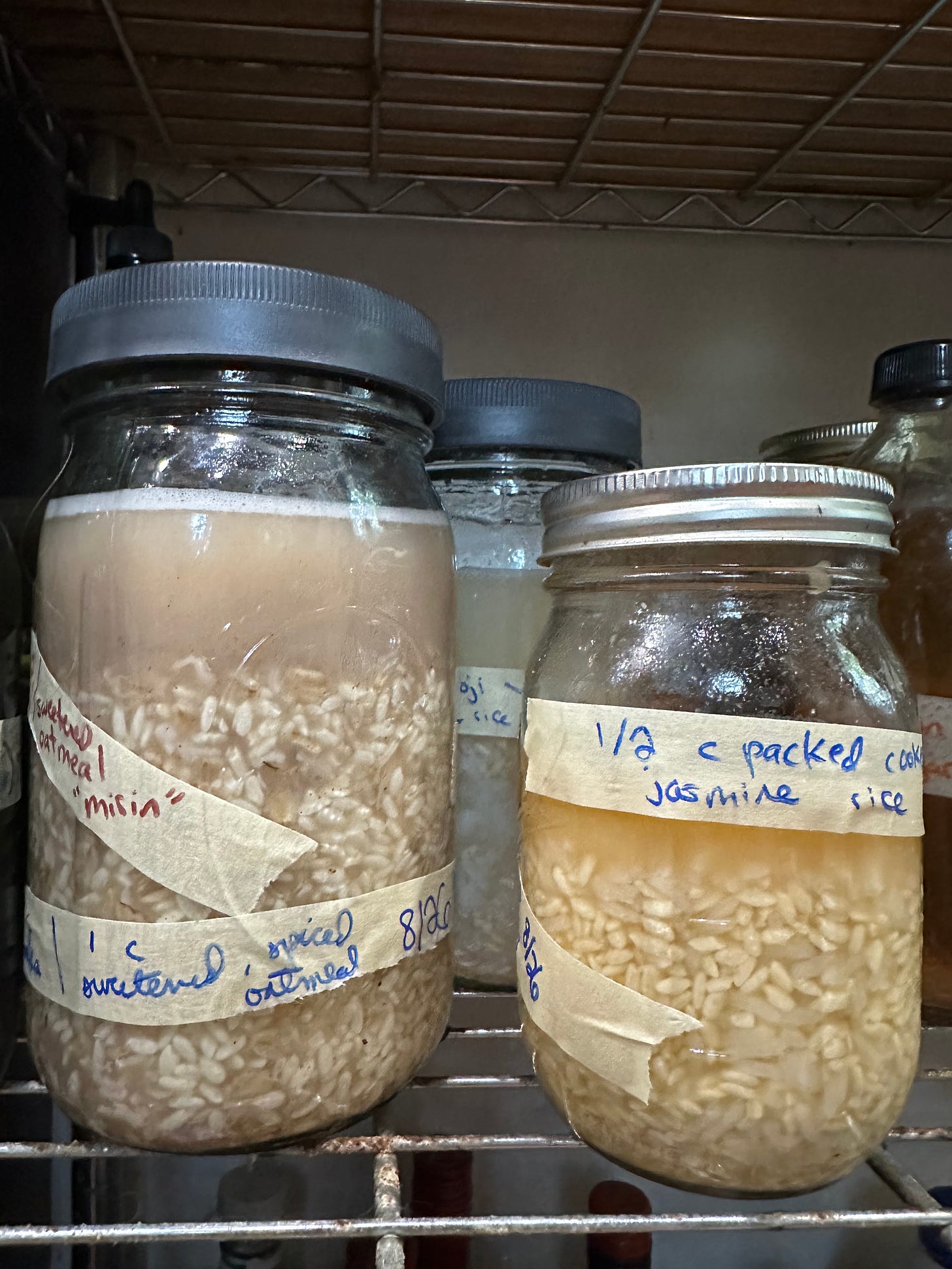Process pieces is a series for paid subscribers that explores my writing and cooking processes, and I encourage you to comment with your own processes if you feel so called. I hope you enjoy!
Dried grains are shelf stable for long periods, but once those grains are cooked, that’s no longer true. So what do we do with the leftovers?
Cooked grains are something I'm asked about a lot in my food waste classes: People overprepare, making a big batch of something thinking they'll definitely eat it all but then alas, they do not.
I have a few things up my sleeve already, namely repurposing the grains by stirring them into other dishes, like into breads, soups, pancakes, etc. When I had chickens, I would often repurpose them as chicken feed, but now that this is no longer the case, I'm eating my leftover grains myself.
In my ongoing search for ways to use up cooked grains, I've turned back to an old favorite: fermentation. The process of mirin-making shows promise for reusing my cooked grains, and I'm curious how the flavor and texture of the mirin might shift depending on what grain I use.
Is it traditional mirin? No (though I give you the recipe for that, too), instead it's the mirin-making process applied using a variety of different grains.
There's always a tension with how to name the repurposing of a process, between a desire to experiment and a desire to not appropriate, misrepresent, or erase.
I've never really found a consistent answer to this issue that feels right: Instead, it seems the best approach (to me) is to take things on a case-by-case basis and be open to feedback.
In this case, I think once these recipes are codified a bit more I might call them something like "grain-based cooking alcohol," though that isn't very clear either (is the grain in the alcohol that's been distilled or the secondary fermentation process? What kind of alcohol? Etc.) Of course, doing so also erases the fact that I used the mirin-making process to inform these recipes, which I also don't want to do.
For now, lacking a better way to approach it, I'm using "mirin" in quotes. Happily taking other suggestions!
What is mirin?
Mirin is a koji, rice, and alcohol-based seasoning, sometimes called "rice wine" in Western supermarkets (though that's not technically accurate).
Mirin was a beverage before it was a seasoning, brought to Japan some time between the 14th and 16th centuries from China, and differs from sake in its production process (sake is brewed to convert starches to sugar and alcohol, mirin already contains alcohol and the fermentation process converts starches to sugar).
Mirin is incredibly versatile (you can find some good recipes using mirin here), and there are several different kinds on the market today (a good overview of mirin + its history is here), but note it's different from "rice wine vinegar" (where fermentation converts rice's starches into sugar and alcohol, then acid), so the two can't be substituted for each other in the kitchen (if you need to substitute for mirin, you're better off using sake).
My "mirin" experiments
I use mirin in many, many dishes, including to add some complex sweetness to the background of root vegetable stews (the plan for these "mirin" experiments this fall).
Keep reading with a 7-day free trial
Subscribe to Root: Historic Food for the Modern World to keep reading this post and get 7 days of free access to the full post archives.





